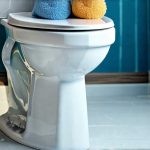Living with urinary concerns – whether it’s overactive bladder (OAB), urgency, frequency, incontinence, interstitial cystitis (IC), post-surgical recovery, or simply heightened sensitivity – can sometimes feel like navigating a social minefield. Dining out, an activity many enjoy for its relaxation and connection, can become fraught with anxiety. The fear of needing to rush mid-meal, the worry about accidents, or the discomfort of prolonged sitting are all valid concerns that can lead people to avoid restaurants altogether. However, it doesn’t have to be this way. With a little planning, awareness, and self-advocacy, individuals can reclaim their dining experience and enjoy meals out with confidence and peace of mind. This article aims to provide practical strategies and helpful considerations for navigating restaurant visits while managing urinary health, focusing on empowerment rather than restriction.
The key is understanding your individual needs and limitations. What triggers urgency for one person might not affect another. Recognizing these personal patterns allows you to proactively manage potential challenges. It’s also important to remember that living with urinary concerns is not a sign of weakness or failure; it’s simply a part of life for many, and there are ways to adapt and thrive. Don’t let fear dictate your choices – embrace mindful planning and take control of your dining experience. This isn’t about eliminating restaurant visits; it’s about making them more comfortable and enjoyable.
Planning & Preparation
Successful dining experiences start before you even leave the house. Careful preparation can significantly reduce anxiety and increase confidence. The first step is choosing a suitable venue. Consider restaurants with accessible restrooms – easily located, clean, and ideally private. Checking online reviews or calling ahead to inquire about restroom facilities can be incredibly helpful. Don’t hesitate to ask specific questions like “Are the restrooms single-occupancy?” or “How far are the restrooms from the dining area?”. This proactive approach demonstrates self-awareness and allows you to make informed decisions.
Beyond restroom access, think about the restaurant’s ambiance. Loud environments can sometimes exacerbate urgency due to increased stress levels. Quieter settings might be more conducive to relaxation. Also, consider the seating options. Booths, while cozy, can sometimes be difficult to exit quickly. Tables with chairs that are easy to move allow for a faster response if needed. Finally, pre-planning what you’ll order can also be beneficial. Certain foods and beverages (detailed later) can contribute to urinary symptoms, so making mindful choices beforehand minimizes potential issues.
It’s crucial to remember the importance of bladder training techniques if you practice them regularly. Don’t deviate drastically from your usual routine on dining-out days. If you typically void every two hours, try to stick to that schedule before and after your meal. This consistency helps maintain control and reduces unexpected urges. Finally, packing a small “emergency kit” – containing items like spare underwear (just in case!), absorbent pads or liners, and wipes – can provide significant peace of mind, even if you don’t end up needing them.
Dietary Considerations & Beverage Choices
What we eat and drink plays a significant role in urinary health. While there’s no one-size-fits-all diet for managing urinary concerns, certain foods and beverages are known to exacerbate symptoms for many individuals. – Caffeine is a well-known bladder irritant, so limiting coffee, tea, and soda can be helpful. – Alcohol also has diuretic effects (increases urine production) and can irritate the bladder. – Citrus fruits and juices, tomatoes, and spicy foods can all trigger urgency or discomfort in some people. – Artificial sweeteners are another common culprit.
Identifying your personal triggers is key. Keeping a food diary to track what you eat and drink alongside any urinary symptoms can help pinpoint sensitivities. Don’t eliminate entire food groups unnecessarily, but be mindful of portion sizes and how different foods affect you. Regarding hydration, while it seems counterintuitive when dealing with urgency, restricting fluids isn’t the answer. Dehydration concentrates urine, which can actually irritate the bladder further. Instead, focus on sipping water consistently throughout the day – aiming for a balanced intake that prevents excessive thirst but avoids overly concentrated urine. Learning how to space out fluids is also very helpful.
Navigating Restaurant Interactions & Self-Advocacy
Dining out often involves interacting with restaurant staff, and it’s perfectly acceptable to advocate for your needs. Don’t feel embarrassed or hesitant to ask for accommodations. This could include requesting a table near the restrooms, asking for water without ice (ice can increase urgency), or even subtly explaining your situation to your server if you anticipate needing quick access to the restroom. Remember, your health and comfort are paramount.
If you do experience an urgent need during your meal, don’t panic. Excuse yourself politely and head to the restroom without delay. There is absolutely no shame in prioritizing your well-being. It’s also helpful to have a pre-planned phrase or explanation ready if you feel uncomfortable discussing your condition with others. Something simple like “I have a sensitive stomach” or “I need to use the restroom quickly” can suffice. If anxiety is a big concern, exploring techniques for calming urinary panic may be helpful.
Finally, don’t let anxiety about potential accidents ruin your meal. Focus on enjoying the food and company. Accept that occasional mishaps can happen, and be kind to yourself. Carrying a small emergency kit provides reassurance without dwelling on negative possibilities. The goal is to regain control of your dining experience and enjoy it fully, despite any underlying urinary concerns.
Managing Discomfort During & After Meals
Prolonged sitting can sometimes exacerbate urinary symptoms for individuals with IC or other sensitivities. To mitigate this: – Take short breaks during long meals – even a quick walk to the restroom or standing briefly can provide relief. – Consider using a cushion that provides support and reduces pressure on the bladder area. – Adjust your posture frequently while seated.
After the meal, continue to monitor your symptoms. Avoid rushing immediately after eating, as this can sometimes trigger urgency. If you experience any discomfort, resist the urge to self-blame or become discouraged. Instead, focus on managing your symptoms and adjusting your strategies for future dining experiences. Remember that each restaurant visit is an opportunity to learn more about your individual needs and refine your approach. It may also be helpful to identify foods that trigger urinary discomfort so you can avoid them when dining out.
The most important thing is to be patient with yourself and celebrate small victories. Reclaiming your ability to enjoy dining out – a simple pleasure many take for granted – is a significant step towards living a full and confident life, despite urinary concerns. It’s about finding what works best for you and embracing a proactive mindset that prioritizes comfort, well-being, and enjoyment.





















